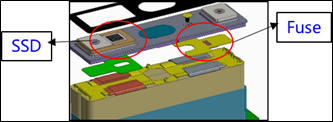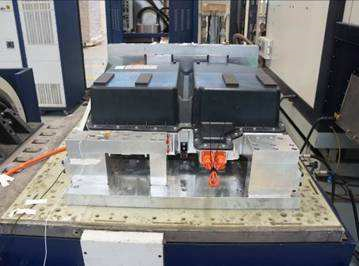The safety design points of power batteries should be designed from the five latitudes of cell, module, battery pack, vehicle and cloud to design a battery that does not catch fire.
For OEMs, the safety design of power batteries has a great impact on the brand. The safety design of power batteries should be built from five dimensions: cells, modules, battery packs, vehicles and cloud big data applications. To ensure that the power battery does not catch fire, the fire can be protected, and the loss needs to be reduced if it cannot be protected. Data monitoring and quality prevention can be carried out before the failure occurs.
one. Cell safety design
Overcharge safety: when the charging voltage of the lithium battery is higher than 4.2V, overcharge will gradually occur, and too much lithium ions will be released from the positive electrode material. At this time, the storage cell will often collapse, and the negative storage cell will be full of lithium atoms. The metal will accumulate on the surface of the negative electrode, and dendrites will grow in the direction of the lithium ions. If they pass through the separator paper, a short circuit will occur. At the same time, during the overcharge process, with the rapid increase of the voltage and temperature of the battery, a large amount of oxygen and heat are released from the electrolyte. When a certain potential is reached, the electrolyte will oxidize and decompose, and a violent chemical reaction will occur, resulting in a large amount of oxygen and heat. The heat can cause the battery case and the pressure valve to collide and rupture, which may cause an explosion hazard.

External short circuit: When a short circuit occurs outside the cell, high heat will be generated inside the cell, causing part of the electrolyte to vaporize, expanding the battery shell, and finally breaking the battery shell.

Internal short circuit: The short circuit in the cell is mainly due to the burr of copper foil and aluminum foil piercing the diaphragm, or the dendrite of lithium atoms piercing the diaphragm and causing a micro-short circuit. The dendrite has a certain resistance value, and the current is generally not very large, but leakage It is relatively fast, that is, the voltage will be low after charging soon.

Design SSDs and short-circuit fuses for cells

Overcharge safety is to let the battery cell overcharge, the side reaction produces gas to make the SSD flip over, short circuit the positive and negative electrodes, and generate a large current to fuse the Fuse to disconnect the circuit.
2. Module safety design
FPC Fuse design: A fuse is added to the FPC flexible row. The main purpose is to prevent the continuous discharge of the battery cells under abnormal working conditions such as short circuit between FPC sampling lines, short circuit between external sampling lines and hardware damage of the external equalization circuit. Pack plays a protective role. The recall accident of Weilai in 2019 is that the voltage at this place is short-circuited after being squeezed by the wiring harness. After adding a fuse, the circuit is cut off to avoid further aggravation of the accident and thermal runaway.


Aerogel: The use of aerogel blankets between the cells in the module can effectively delay the spread of the high temperature of the thermal runaway hole of the cell to other cells. The gel in the car battery module can effectively solve the low temperature environment. The thermal insulation of lithium iron phosphate batteries and the thermal runaway diffusion of ternary batteries in high temperature environments are the preferred materials for thermal insulation of lithium batteries.

three. Pack safety design
1. Mechanical safety design:
The mechanical shock simulation standard is in accordance with SAE J2380, and the vibration test in three directions of X\Y\Z is set. After the test, the insulation resistance value of the battery, the positive and negative voltage of the battery, the air tightness and the voltage of the single cell are measured.

Squeeze test: When the battery pack is squeezed, the deformation of the battery pack shell should not produce sharp tissue, pierce the battery pack and cause a short circuit.
Drop test: The battery pack is most likely to fall in the direction of timely maintenance or installation. If the most likely direction of fall cannot be determined, then freely drop from a height of 1m to the cement floor along the z-axis direction; observe at room temperature for 2 hours. No fire, no explosion, no leakage
Ball hitting experiment: According to the different requirements of each OEM, different ball hitting experiments can be set, such as setting the ball radius 25mm, the ball hitting cut-off force 16kN, and conducting the experiment at the weak point of the shell. Check whether the casing is damaged, and check whether the battery is damaged after unpacking. The battery will not catch fire, explode, or leak.

2. Electrical Safety
Insulation resistance: Under the maximum working voltage, the insulation resistance of the DC circuit should not be less than 100Ω/V, and the AC circuit should not be less than 500Ω/V.
Finger probe: The finger probe cannot touch the above high-voltage conductive parts; if the battery pack or system is not powered on, disconnect the high and low voltage connectors, insert the IPXXB test tool into the high and low voltage connectors respectively, and pass the buzzer or The multimeter shows whether the tip of the test tool is connected with the conductive part of the connector.
Indirect contact protection: Equipotential requirements, the resistance potential of any bare conductor in the Pack system is designed to be less than 0.1 ohms, which meets the requirements of ECE European standards and GBT 18384.3. Electrical Clearance: The design standard of the electrical clearance including high-voltage copper bars, BDUs and high-voltage plug-ins is greater than 6.5mm, which meets the requirements of the international standard IEC 60664-1. Creepage distance: The design standard of the creepage distance of high-voltage copper bars, BDUs and high-voltage plug-ins is greater than 8mm, which meets the requirements of the international standard IEC60664-1.
Four. Vehicle design safety
1. Protection of the lower case
If the vehicle body and chassis are designed to ensure that the peripheral position of the battery pack is more than 5mm below the bottom surface of the battery pack, the lower shell of the battery pack should have a certain thickness, and can prevent stone from PVC.

2. Air tightness protection
The vehicle wading test should consider the position of the high and low voltage connectors, the upper and lower casings of the battery, and no smoke, fire, or water entering after wading.
Shanghai’s mandatory DB31T634-2012 requirements: the vehicle can safely drive at a speed of 30Km/h for 10 minutes when wading 150mm in water, and can safely drive more than 5Km/h for 10 minutes when wading in 300mm water.
5. BMS cloud data monitoring

1. Battery sensitive factor mining & environmental feature mining
Monitor the general health of the battery. Such as battery sensitive factors such as ambient temperature, such as cell voltage, monitor the cell voltage of the battery (7X24 hours), compare the abnormality of the lowest voltage and the highest voltage; monitor the size of the cell current, such as the continuous battery current does not change abnormally; Monitor the temperature of the cell, and give an early warning of the cell when the cell temperature exceeds the threshold.
2. Improve battery life & monitor battery safety status
When the charging current becomes abnormally large, monitor whether there is an abnormal short-circuit point. When the vehicle is stopped after fast charging, monitor whether the temperature rises abnormally. Periodically wake up the BMS to monitor cell problems. Predict battery life in advance based on customer driving habits.
3. All-round battery monitoring and status analysis from the local to the cloud to achieve early warning of accidents
When the battery has been used for a period of time and the SOC can no longer reach the standard value, the aging analysis of the battery in the low SOC state. According to the customer’s driving behavior, the aging state of the battery cell can be predicted in advance.
References:
1. Bio-based composite gel electrolyte with dual functions of inhibiting lithium dendrites and capturing manganese ions
Research Group of Prof. Sui Gang and Prof. Yang Xiaoping from Beijing University of Chemical Technology
Source: Zhihu www.zhihu.com
Author: boundless sea of quality
[Zhihu Daily] The choice of tens of millions of users, to be a big cow of new things in the circle of friends.
click to download
There are 14 more answers to this question, see all.
Further reading:
Batteries for electric planes?
This article is reproduced from: http://www.zhihu.com/question/425762666/answer/2513611570?utm_campaign=rss&utm_medium=rss&utm_source=rss&utm_content=title
This site is for inclusion only, and the copyright belongs to the original author.